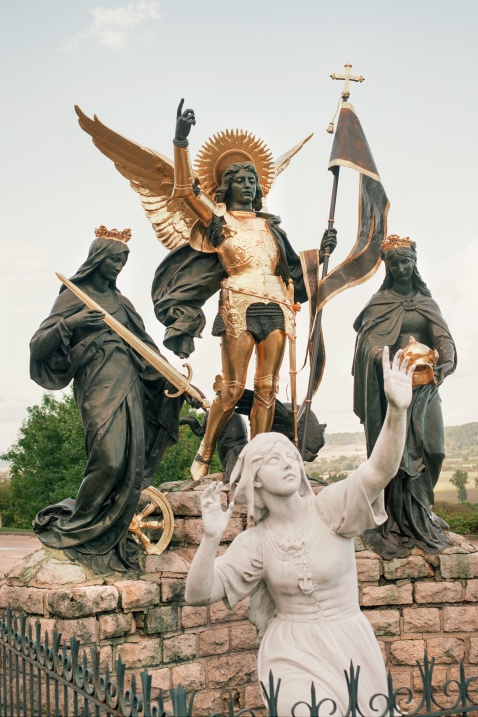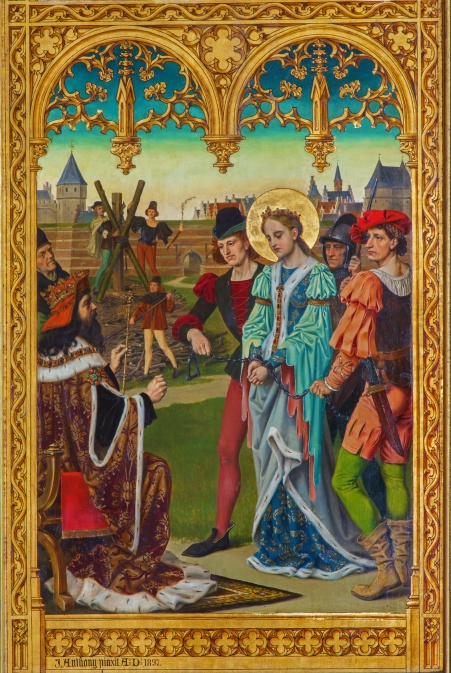
Frederick Douglass is alive.
At least, that was the impression given by the 45th President of the United States when he praised Douglass at a recent Black History Month event, saying: “Frederick Douglass is an example of somebody who’s done an amazing job and is getting recognized more and more, I notice.” The Atlantic, Feb 1 2017.
Douglass, one of the most important figures in the anti-slavery movement and one of the greatest orators America has ever produced, died February 20, 1895, and the widespread public amusement at Donald Trump’s remarks about him came from a sense that the President had almost no idea who Douglass was. However, if Mr. Trump read one of Douglass’s Reconstruction-era speeches on virtue and political change, he might almost be forgiven for believing that the greatest Black American leader of the 19th century still walks among us.
April 16, 1885 was the 23rd anniversary of the emancipation of slaves in the District of Columbia. President Grover Cleveland reviewed a parade of over 5,000 people marching near the White House, and that evening, Frederick Douglass gave a speech, “We are Confronted by a New Administration,” at the Lincoln Memorial Congregational Church.
The occasion of Douglass’s speech was ominous. The Republican party had lost power after 25 years of running a post-Civil War government the emancipated slaves had come to rely on. Faced with the prospect of diminished freedoms and the great work of Reconstruction left undone, Douglass spoke of the election as a bitter defeat: “We do not stand where we stood one year ago. We are confronted by a new administration. The term of steady, unbroken successful Republican rule, is ended. The great Republican party that carried the country safely through the late war against the rebellion, emancipated the slave, saved the Union, reconstructed the government of the southern states, enfranchised the freedmen, raised the national credit, improved the currency, decreased the national debt, and did more for the honor, prosperity and glory of the American people, than was ever done before in the same length of time by any party in any country, under similar circumstances, has been defeated, humiliated, and driven from place and power.”
For Douglass, this election is not just the defeat of a good cause, but the triumph of those opposed to justice: “For the first time since the chains fell from the limbs of the slaves of the District of Columbia; for the first time since slaves were raised from chattels to men; for the first time since they were clothed with the dignity of American citizenship, they find themselves under the rule of a political party which steadily opposed their every step from bondage to freedom; and this may well give a peculiar coloring to the thoughts and feelings with which this anniversary of emancipation is celebrated.”
He acknowledges that slavery and racial oppression do not exist apart from the social structures that justify and maintain them, “Like any other embodiment of social and material interest peculiar to a given community, slavery generated its own sentiments, its own morals, manners, and religion, and begot a character in all around it in favor of its own existence.”
Such attitudes are not those of a morally strong and healthy nation; Douglass praises the wisdom in the rejection of a two-nation system, one slave and one free, “hostile civilizations side by side, with a chafing bloody border between them,” in favor of “one country, one citizenship, and one liberty for all the people.”
Insisting that the divisions that led to the Civil War were moral, he suggests the solution to the unfinished business of Reconstruction lies in the cultivation of virtue: “There never was any physical reason for the dissolution of the Union. The geographical and topographical conditions of the country all serve to unite rather than to divide the two sections. It was moral, not physical dynamite that blew the two sections asunder.”
Douglass explains that: “Twelve hundred more colored votes in the state of New York would have saved that party from defeat,” and suspects these votes were lost because the campaign did not address moral issues: “Little was said, thought, or felt, about national integrity, the importance of maintaining good faith with the freedman or the Indian, or the protection of the Constitutional rights of American citizens, except where such rights were in no danger . . . No nation, no party, no man, can live long and flourish, on falsehood, deceit, injustice, and broken pledges.”
“On the other hand,” he notes, “where good faith is maintained, where justice is upheld, where truth and right prevail, the government will be like the wise man’s house, in scripture: the winds may blow, the rains may descend, the flood may come and beat upon it, but it will stand, because it is founded upon the solid rock of principle. I speak this, not only for the Republican party, but for all parties.”
Attempting to find common ground with Democrats, he appeals to democratic ideals of citizenship, “We boast of our riches, power, and glory, as a nation, and we have reason to do so. But what is prosperity, what is power, what is national glory, when national honor, national good faith, and national protection to the rights of our citizens are denied?”
Warning that the social unrest of the European under classes could just as easily happen in American, Douglass urges politicians not to abandon oppressed peoples, writing: “Who could blame the negro if, when he is driven from the ballot box, the jury box, and from the school house, denied equal rights on railroads and steamboats, called out of his bed at midnight and whipped by regulators, compelled to live in rags and wretchedness, and his wages kept back by fraud, he shall imitate the example of other oppressed classes, and invoke some terrible explosive power as a means of bringing his oppressors to their senses, and making them respect the claims of justice.” To this typed passage Douglass has added, in script, “denied a fair trial when accused of crime,” and, “This would be madness, but oppression will make even wise men mad.” Although he hastens to assure his audience that he does not hope for or approve violent means, his edits suggest he believes that repeated injustices inevitably produce violent outcomes.
Yet Douglass seems to sense that he is standing on the eve of a terrible era. One of the speech’s most chilling passages concerns the “recent” Supreme Court decision that Douglass says “came upon the country like a clap of thunder from a clear sky . . . a surprise to enemies, and a bitter disappointment to friends.” Douglass is referring to the Supreme Court’s ruling in The Civil Rights cases of 1883, a decision that would usher in 80 years of Jim Crow racial segregation and pave the way for the infamous “separate but equal” ruling of Plessy v. Fergusen (1896), as well as widespread lynching and other forms of racist terrorism. The Civil Rights cases of 1883 laid the groundwork for Plessy by ruling that public accommodations were not reached by the Fourteenth Amendment, and that Congress and the courts could not stop hotels, clubs, and restaurants from discriminating on the basis of race. Justice John M. Harlan was the sole dissenting voice, and Douglass praises him for being a “grand representative of American Justice standing alone.” Harlan’s famous dissent in the Civil Rights cases would someday serve as the basis for civil rights jurisprudence—but not until after World War II.
Despite his sense that the lives of Black Americans were about to get much worse, Douglass speaks to the “soul of the nation” and its virtues, the “spiritual side of Humanity” that cannot be burnt or drowned so long as it holds fast to its moral ideals, declaring: “The life of the nation is secure only while the nation is honest, truthful, and virtuous, for upon these conditions depends the life [o]f its life.” He talks about the great Chicago fire as one that left the city in ashes, yet could not eradicate the ideals of its inhabitants because they were possessed of civic virtue: “[T]here remained the invisible soul of a great people, full of energy, enterprise, and faith, and hence, out of the ashes and hollow desolation, a grander Chicago than the one destroyed, arose as if by magic.”
Douglass’s speech concludes with an appeal to civic virtue and civic involvement as crucial to surviving political change, not just as because civic virtue cultivates the self, but because it helps form a democratic community of brave and just citizens. As we celebrate Black History Month, we might take to heart his sense that a morally virtuous citizenry is the bedrock of a flourishing democracy. Quoting a poem by Sir William Jones that asks, “What constitutes a state?” Douglass answers with lines emphasizing courage and justice as virtues that carry the nation even in its most turbulent eras: “Men who their duties know,/ But know their rights, and, knowing, dare maintain.”
For the full text of Douglass’ speech, visit “Speech on the 23rd Anniversary of Emancipation in the District of Columbia,” also known as “We are Confronted by a New Administration” here.
Jaime Hovey is Associate Program Director for Virtue, Happiness, & the Meaning of Life.


